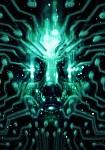
System Shock - May Update
The May update for the System Shock remake project is fully devoted to a dev diary of Audio Director Jonathan Peros.
This is Jonathan Peros, Audio Director on System Shock. I wanted to include a quick update to give some insight into an aspect of the musical direction of System Shock! As you all can probably guess, working on a reboot of a classic game definitely has its own set of unique challenges; we are all tasked with the job of making a good game by today’s standards, but not losing sight of what made the original game great. As such, I’ve gone back to the files for System Shock 1’s soundtrack over and over, spending as much time as I can absorbing what made Greg LoPiccolo’s work on the original music awesome. I thought I would share a few of the great things about System Shock 1’s soundtrack here with you, some of the game’s most dedicated fans.
System Shock 1’s soundtrack was far ahead of its time in many respects. One of the most obvious ways that this shows itself is in its procedural music system. The original game had a MIDI soundtrack, which would play through various soundcards in order to produce the game’s music. This is different than today’s game music, which is for the most part pre-recorded audio files playing back. Because the music was played back note-by-note through data on the soundcard, this opened many possibilities for how the game dealt with music. The music for each level is not contained in a single file, but instead each level’s music is built procedurally from different musical building blocks, controlled by parameters in the game. The core set of each level’s musical building blocks are named with a gameplay state (“W”alking, “P”eril, “C”ombat) and a section (“A”,”B”,”C”,…). “WA” can play into “WB”, unless the game state changes to peril, at which it may play into “PB”. This kind of interactive system provides both varying intensity, which mirrors the pacing of the gameplay, and linear sections, which give the music a sense of forward momentum and structure. This procedural music system is then made more interactive by having various layers which represent the various enemies that are overlaid on top of the core level music, based on the proximity of enemies of that type. These layers are used to represent these enemies across the entire soundtrack, giving each enemy type a theme of sorts! Very cool, stuff!
Information about
System ShockSP/MP: Single-player
Setting: Sci-Fi
Genre: Shooter-RPG
Platform: PC
Release: Released

